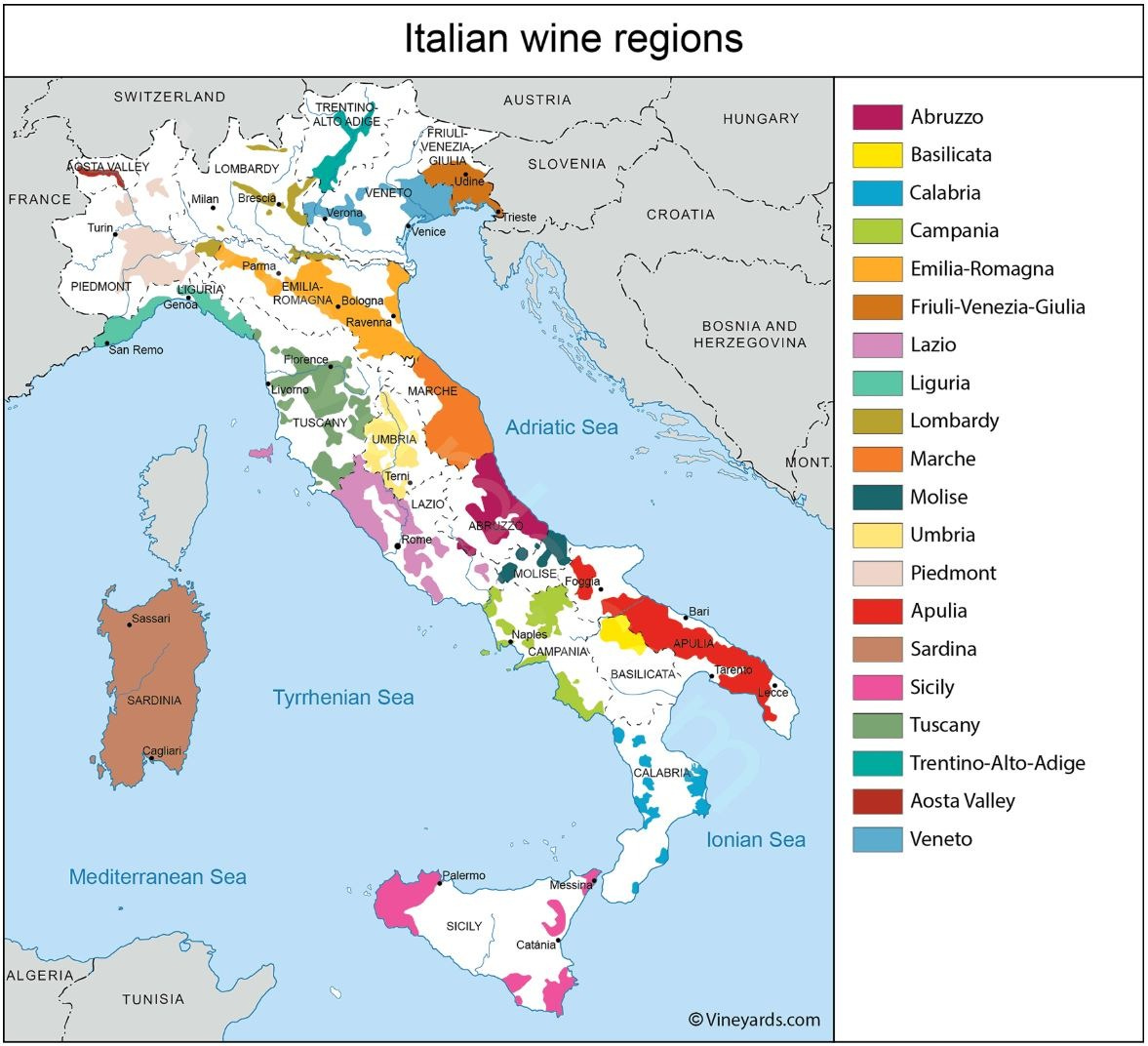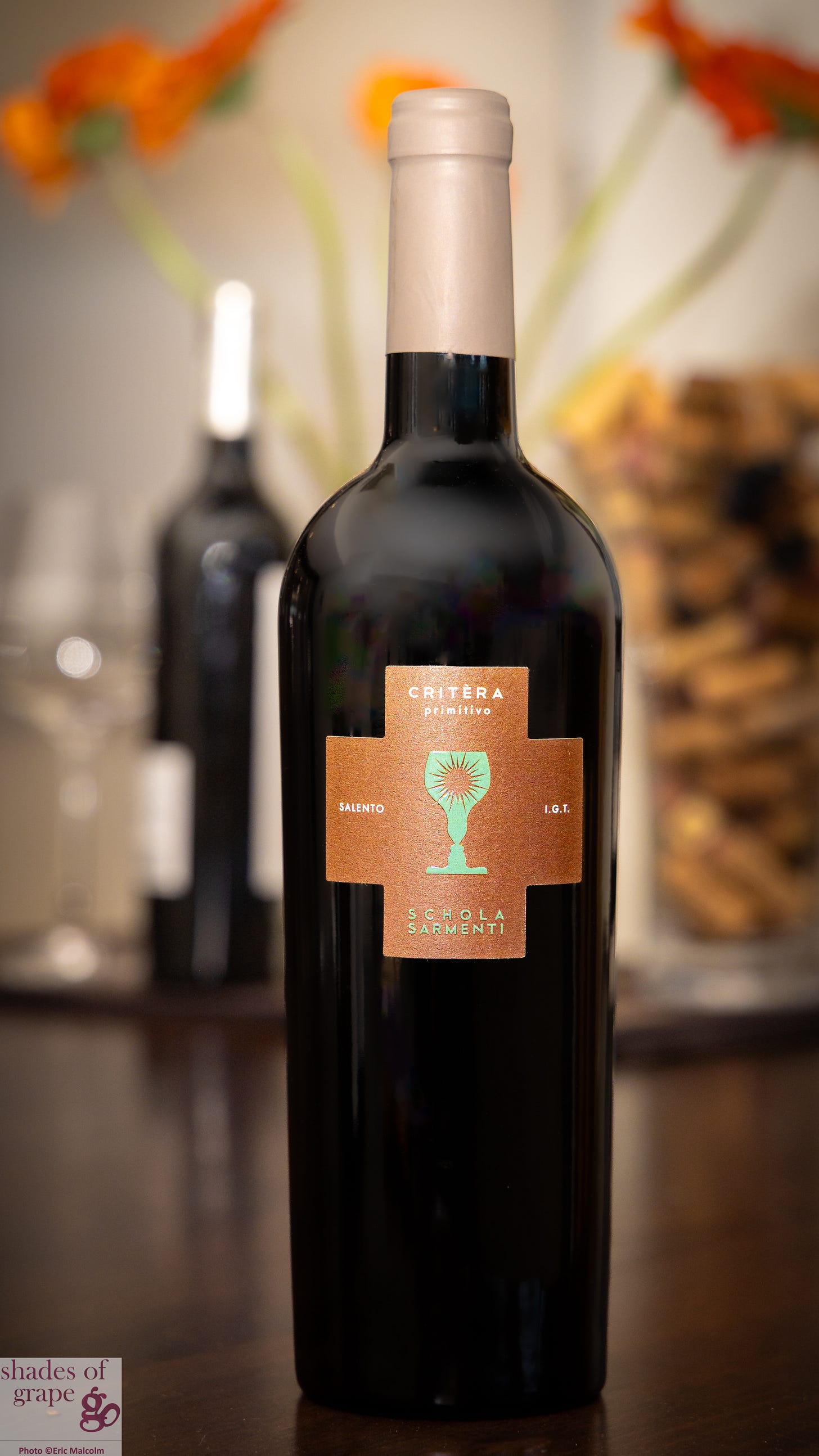Primitivo’s Roots & Ripeness - The Grape Who Found Itself
- clone wars - monks, mutations & DNA tests
Interested in one-on-one curation time with me? Please reach out! No commitment or minimum purchase required.
If you live in Edmonton - I am here for you too! (No, contrary to the rumours - Cork is NOT opening a store in Edmonton BUT we want to deliver to YOU!)
Thanks to all the paid subscribers for their support! This funding helps cover the costs involved in creating these weekly articles!
Appreciate my wine recommendations? Enjoy my personal wine curation service? Consider upgrading to a paid subscription! Help me continue sharing the world of wine with you.
Today… the Primitivo grape.
Okay this will be a review, as you have already written an article on Primitivo, right?
Nope, I thought so too … but I have NOT!
Oh, but you surely wrote about the same grape, whose name is different in different countries, right? Perhaps Zinfandel in the USA, or Tribidrag aka Crljenak Kaštelanski in Croatia, no?
Believe it or not … no, I did not write about any of the Primitivo synonyms.
(Shocked vibe enters the page)
I know, I am just as shocked as you are!
Primitivo is what the grape is called in Southern Italy where it grows mainly in the Puglia region. But it is a grape of Croatian origin. Since the featured wine is Italian, I will refer to it as Primitivo for the rest of this article. Although perhaps I should call it Zinfandel, as California grows it far more than anywhere else in the world, with 16,000 hectares in 2020.

The “Primitivo” vine was imported, presumably sans name, to Long Island, New York from the Austrian Imperial Nursery in Vienna, likely in 1829. By the early 1830s, New England was referring to it as Zenfendel and Zinfindal while producing table grapes with it.
Learned all about table grapes in the last article. Was that planned, you nerd?
Simply a fun coincidence, I promise!
In the aftermath of the 1849 California Gold Rush, some people became grape growers. Vines were purchased from the east coast of the USA, resulting in Zinfandel being made into wine in Sonoma by 1862.
Though there were debates in the late 1960’s, it wasn’t until the early 1990’s, using DNA profiling, that winos connected the dots that Zinfandel was Primitivo.
In 2001, a collaboration between UC Davis in California and Croatian researchers found a DNA match between Primitivo/Zinfandel and an almost extinct Croatian grape. This clone was grown near Split in the region of Kaštela. It was aptly called Crljenak Kaštelanski which translates to “red grape of Kaštela.” This sample also was a match for a 90-year-old dried specimen of an ancient Croatian vine locally named Tribidrag.
Tell me more about Puglia, please!
Puglia (Apulia in English) is the wine region in the heel of Italy. The Adriatic and Ionic Seas surround the 350 km long Southern Italian region. It is an important region for grape production for both wine and table grapes.
There you go again with your table grapes!
Fun fact: Puglia comes from the Latin “a-pluvia” meaning “lack of rain” in English.
The key grapes grown there are essentially a 3-way tie for hectares grown between Sangiovese, Primitivo, and Negroamara, followed by Trebbiano as the top white grape.
From the map I see that Puglia is more or less across the Adriatic from Croatia.
Thanks for the segue. It is now known that the grape arrived in Italy from Croatia sometime in the 1700s. It was renamed by Italian monks to Primativo (not a typo) from the Latin word Primativus which means first to ripen. The monks had noticed it ripened earlier than other grapes.
Interestingly, work done at UC Davis in California to understand the Primitivo vs. Zinfandel clones showed that the Primitivo clones ripened earlier than Zinfandel. The Primitivo clone reached maturation at 24 degrees Brix while the Zinfandel clone reached maturity at 26 degrees Brix.
I think it is cool that they have evolved differently and that this has altered when the grape reaches full ripeness. Ripeness is now defined as the point when the phenolic compounds in the grape skins—like flavors and tannins—are at their peak.
What is extra cool is that the Crotian name Tribidrag, which comes from the Greek language… you guessed it – means early ripening!!
Consistent. Remind me the deal with clones again … because the obvious question is: “Are they the same or not? Sheesh!”
As a vine grows, random mutations sometimes occur during cell division. Some won’t affect the vine, but others will alter things like grape size and skin thickness or disease resistance. If the mutation is favorable, growers may propagate it, and a new clone is born.
A mutation causing significant changes in the vine or grapes, will result in a new variety. Examples of this are how Pinot Gris and Pinot Blanc which are Pinot Noir mutations at one point were classified as new varieties (as opposed to Pinot Noir clones).
So what you are saying is that Primitivo/Zinfandel/Tribidrag/Crljenak Kaštelanski are all the same variety but different clones!
Correct.
The featured wine named “Critèra” is from the province of Lecce by a producer called Schola Sarmenti which means “Vine School”.
Before you keep reading to learn more about the featured wine, check out this week’s article by Sip with Nik, also on Substack! She does a deep dive on a couple Primitivo subregions in Puglia. You should check it out!
Uncanny how often this happens?
Yes, it is like there is a wino’s collective consciousness or something. Check out my featured wine below – delicious wine for summer BBQs and picnics!!
Enjoying my recommendations? Consider upgrading to a paid subscription.
Schola Sarmenti ‘Critèra’ Primitivo 2021 from Puglia, Southern Italy
Style: Medium Body Fruit-Driven Red Wine
Varieties: Primitivo
This intensely flavored, fruit driven wine has notes of strawberry, rhubarb, red and black cherry, ripe blueberry, baking spice, vanilla, cocoa, leather, sweet cigar, and earth. The tannins are moderate with a chalky texture.
Best pairings: BBQ ribs or brisket, Beef cheeseburgers, Pizza, Spicy Foods (chili, Mexican cuisine, spicy Italian sausage), Aged cheese: Parmigiano-Reggiano or Pecorino
Serving Temperature: 15-17 degrees Celsius
Serving Tips: Pour & enjoy!
Price: ~$30 Cdn
If you're in Alberta and want a one-on-one wine curation experience, please reach out! No commitment or minimum purchase required. Interested? Please reach out!
If you live in Edmonton - I am here for you too! (No, contrary to the rumours - Cork is NOT opening a store in Edmonton BUT we want to deliver to YOU!)
A huge thank you to my paid subscribers—your support helps cover the costs of creating these weekly articles.
Love my wine recommendations? Enjoy my personal wine curation service? If you find value in my writing, consider upgrading to a paid subscription to help me keep sharing the world of wine with you!
Like what you are reading? Click on the ❤ to let me know it resonated with you!
SOURCES:
Critera (2022) Schola Sarmenti. Available at: https://www.scholasarmenti.it/en/the-wines/critera/ (Accessed: 24 June 2025).
Goh, M. (2024) Origin and history of the primitivo grape variety, LinkedIn. Available at: https://www.linkedin.com/pulse/origin-history-primitivo-grape-variety-melvin-goh-bylic/ (Accessed: 24 June 2025).
Harding, J. and Robinson, J. (2023) The oxford companion to wine. Oxford, United Kingdom: Oxford University Press.
Learn about Primitivo: Wine, grape, history, characteristics, and pairings - 2025 (no date) MasterClass. Available at: https://www.masterclass.com/articles/learn-about-primitivo-wine-grape-history-characteristics-and-pairings?utm_source=chatgpt.com (Accessed: 24 June 2025).
MacNeil, K. (2022) The wine bible. New York, NY: Workman Publishing.
Primitivo: The early-ripening varietal (2020) WineMakerMag.com. Available at: https://winemakermag.com/article/primitivo-the-early-ripening-varietal?utm_source=chatgpt.com (Accessed: 24 June 2025).
Puglia » Italian wine central. Available at: https://italianwinecentral.com/region-province/puglia/ (Accessed: 25 June 2025).
Wine map of Italy (no date) vineyards. Available at: https://vineyards.com/wine-map/italy (Accessed: 24 June 2025).
Wine & Spirit Education Trust (2021) D3: Wines of the World - An accompaniment to the WSET Level 4 Diploma in Wines. Version 1.2. London: Wine & Spirit Education Trust.




Love your humour as always. Reading with a smile ! It’s so interesting the evolution of grape varieties. Never thought I’d be so hooked x
"Primitivo/Zinfandel/Tribidrag/Crljenak Kaštelanski are all the same variety but different clones!" I thought they were just local names for the same grape. Thanks Eveline. I have learned something today.